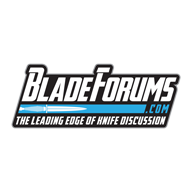A "puukko" is not a specific set of criteria. Its criteria are very vague and open for interpretation from the makers, like many other old time items and production. "Finka" is what Eastern Europe call the style of knife (no, not the Russian bs you see on google). People like to put a set of hard description on things, especially from America for marketing (scandi and what not), and with time it shape some people idea of the item.
Look up the "falchion" and tell me what set of criteria they need to have to be called one. As the only common description of falchion across Europe is single edge blade.
Japanese Tanto, aka "short blade", has so many blade shapes and style. It doesn't need to have that "tanto" blade shape to be called one. In Japanese , the term is considered "generic for short sword". Yet, they now are a set of criteria.
Tollekniv direct translation is "custom" or "handmade" knife. Again, very up to interpretation and not a hard set of criteria.
Too OP, give us some of your idea and usage, it would be easier to recommend. A modern military or survival puukko from Finland is very different from a more traditional one.
Look up the "falchion" and tell me what set of criteria they need to have to be called one. As the only common description of falchion across Europe is single edge blade.
Japanese Tanto, aka "short blade", has so many blade shapes and style. It doesn't need to have that "tanto" blade shape to be called one. In Japanese , the term is considered "generic for short sword". Yet, they now are a set of criteria.
Tollekniv direct translation is "custom" or "handmade" knife. Again, very up to interpretation and not a hard set of criteria.
Too OP, give us some of your idea and usage, it would be easier to recommend. A modern military or survival puukko from Finland is very different from a more traditional one.

